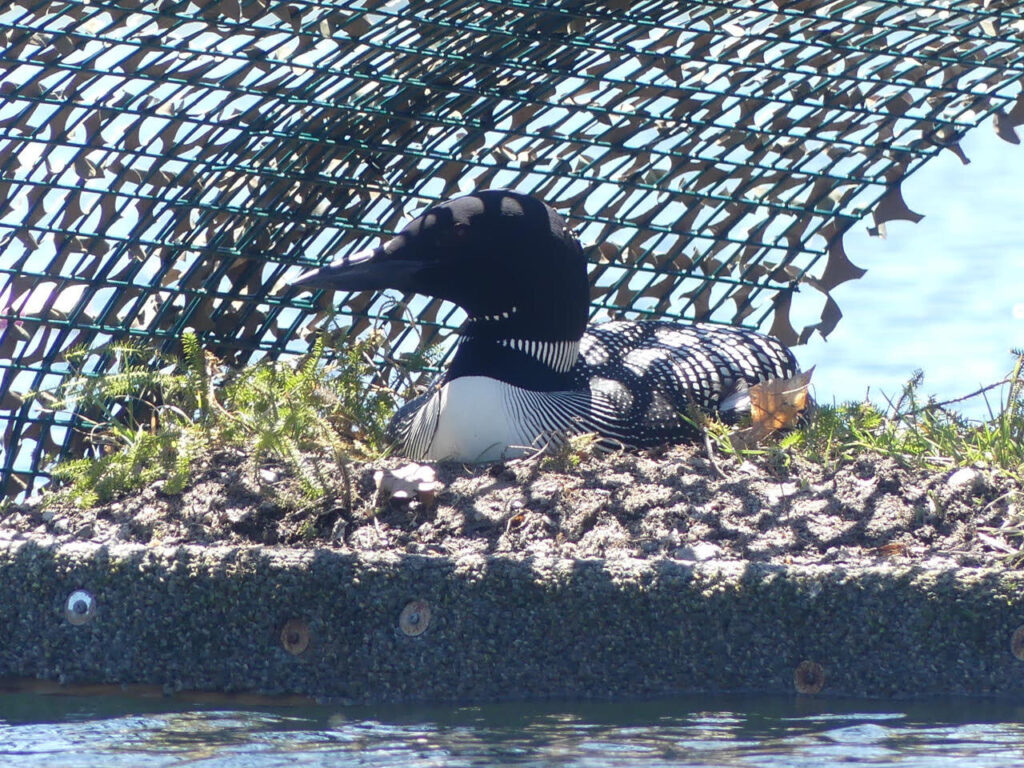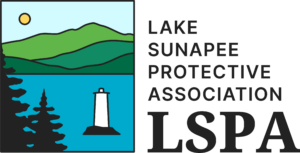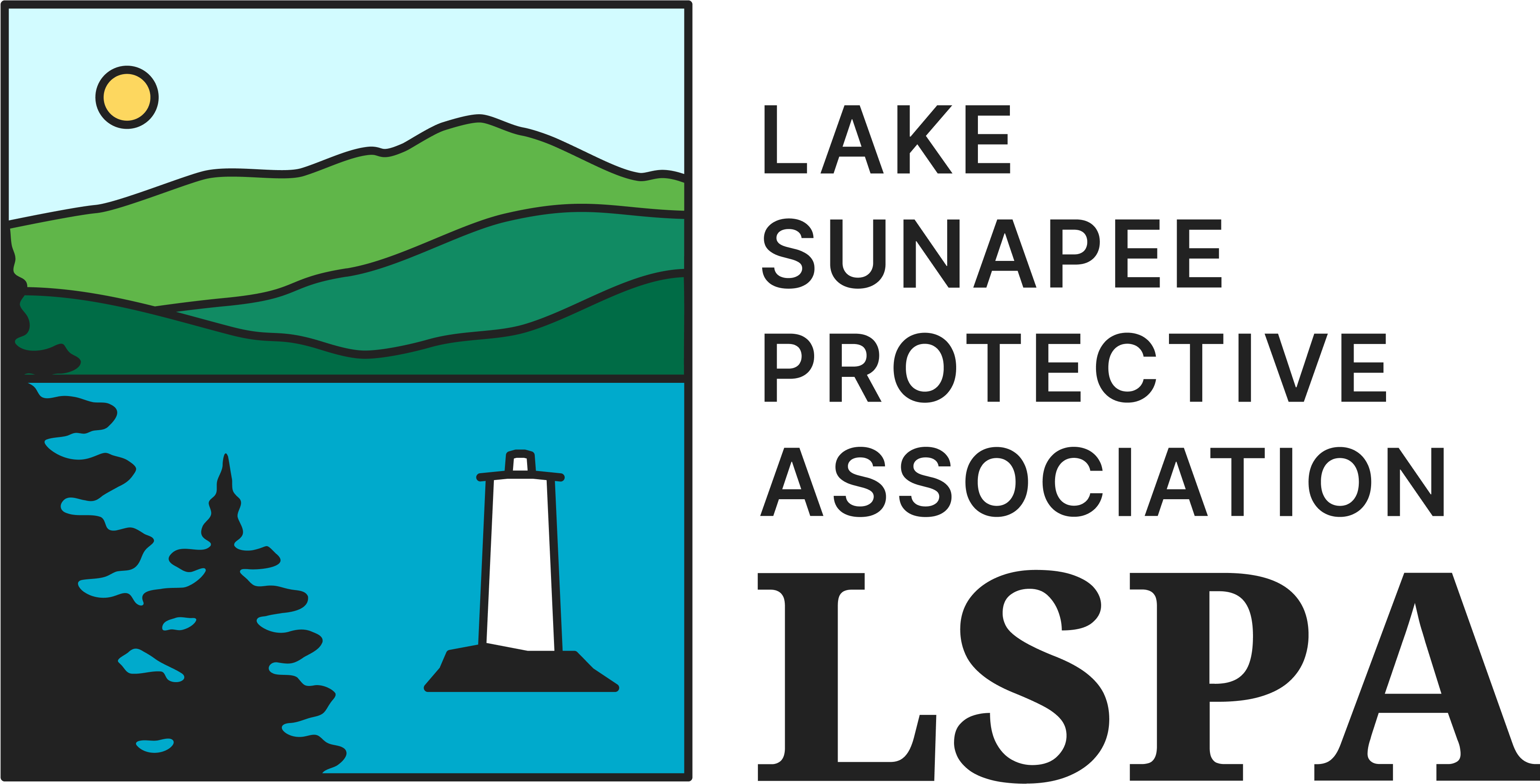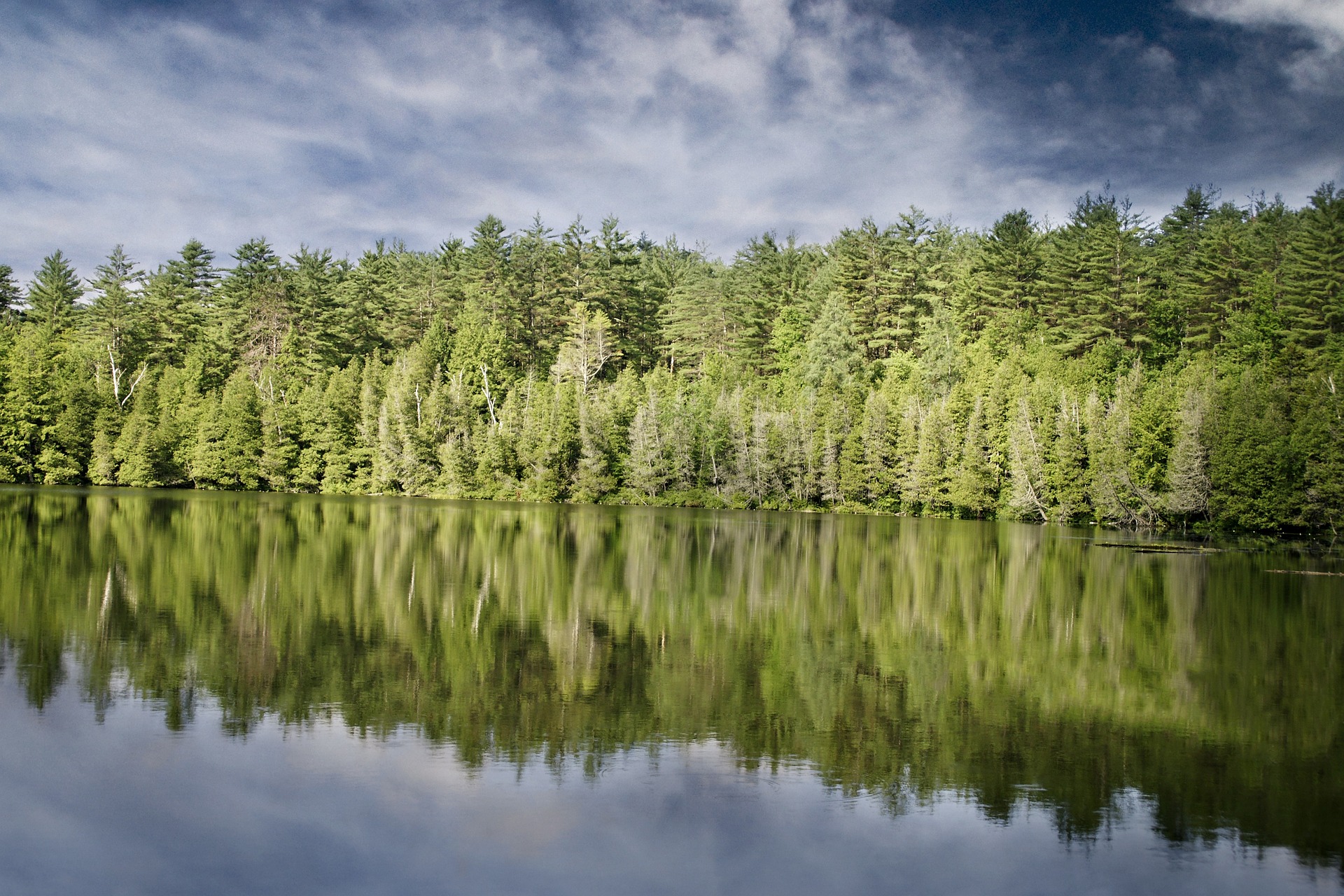Loons on Lake Sunapee
Each summer we are lucky to have loons on Lake Sunapee. Read below for more information on loon behavior.
Common Loon Behavior
Loons can be very vocal, having four distinct calls, and will often flap their wings as a normal part of their preening and bathing behavior. However, a loon who has raised its forehead feathers, giving it a “squared-off” appearance, usually indicates it is nervous. Other signs indicating you might be too close to a loon include if the loon is doing a “penguin dance”, vocalizing at you, or is lying low with its head down. If you see any of these signs, give it more space! Please stay well away from nesting loon areas. Note: for the above picture, the photographer, in a kayak that paddled in slowly and quietly, sits patiently and stays way out from the warning signs and lines. This picture was taken with a big zoom lens (600mm) and then cropped for what appears to be a close up photo.
Click here to see the Loon Preservation Committee’s (LPC) “Understanding Loons: Learn to Read the Signs” brochure.

Respect Loons and Other Wildlife
-
Use only non-lead fishing tackle
-
Give them plenty of space (stay at least 150 feet from loons)
-
Retrieve fishing lines and other human debris that can choke, suffocate and starve wildlife
-
If a loon looks to be in distress DO NOT approach and follow steps below.
Reporting Possible “Loon-in-Distress”
Healthy preening behavior can make a loon appear injured or tangled. Click here to see video and photos of a loon preening. If a loon has beached itself on shore or does have fishing line visible on it then call the Loon Preservation Committee (LPC) at (603) 476-5666. Voice or email (field@loon.org) messages to LPC are checked daily.
If you do not receive an immediate response from LPC or if animal in distress is not a loon then contact NH Fish & Game (603) 271-3361.
Be prepared to report the location of the loon, and, if possible, send a photo to the responding field staff or volunteers. Thank you for your help and concern in responding to sick and injured loons!
Loon Look-Alikes
Some people may confuse other waterbirds with loons. Click here for LPC’s “Loons and Other Waterbirds: How Do You Tell Them Apart?” web page.
Get The Lead Out
According to the Loon Preservation Committee, lead poisoning resulting from the ingestion of lead fishing tackle is the leading cause of documented Common Loon mortality in New Hampshire, accounting for 42% of documented adult loon deaths since 1989. Current state law bans the sale and freshwater use of lead sinkers and lead jigs weighing one ounce or less in New Hampshire. Lead is toxic to wildlife and humans and is no longer allowed in paint, water lines and gasoline. However, it is still allowed to be used in some states for fishing tackle and ammunition. Non-lead tackle is available in a wide variety of styles and sizes to meet the needs of anglers. For more information on loons and lead, click here.
LPC partnered with NHF&G to conduct a lead tackle buyback program in 2018. The program provides a financial incentive to encourage anglers to make the switch to non-lead fishing tackle. Buyback participants exchange 1 ounce or more of illegal lead tackle at participating locations for a $10 store voucher. These vouchers can then be used to purchase loon-safe tackle or other supplies. The program has been very successful and since 2018 they have collected over 14,800 lead sinkers and jigs weighing one ounce or less. For more information, visit www.loonsafe.org.
There is a collection bin for old lead tackle at LSPA if you have any that you would like to discard.





